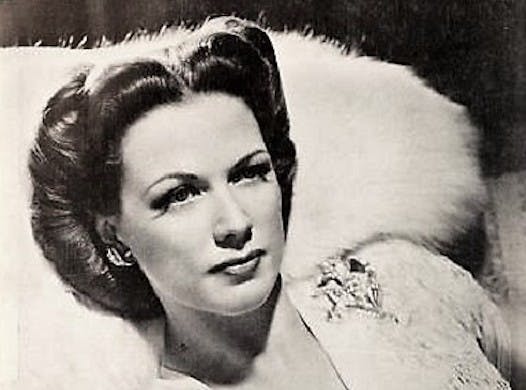Born To Dance, Eleanor Powell Also Seemed To Have a Higher Calling
Her biographers do not say in so many words, yet it seems that she exuded not only a wholesomeness and perfectionism that no one in Hollywood could rival, but a kind of immaculate aura.

‘Eleanor Powell: Born to Dance’
By Paula Broussard and Lisa Royère
University Press of Kentucky, 360 pages
Why didn’t Jimmy Stewart kiss Eleanor Powell? They were working together on “Born to Dance,” Powell’s signature film, and he was “smitten,” to use her biographers’ word. At the end of his first and only date with Powell, he drew back even as she expected him to draw near with that kiss.
The stammering Stewart had confessed he thought Powell was out of his league. What did that mean? Her biographers do not say in so many words, yet it seems that she exuded not only a wholesomeness and perfectionism that no one in Hollywood could rival — except perhaps for Fred Astaire — but a kind of immaculate aura that awed Stewart.
Powell and Astaire did only one film together, “Broadway Melody of 1940,” and they produced a stunning tap dancing masterpiece, inspired by Cole Porter’s “Begin the Beguine.” They were supposed to do more films together, but Astaire demurred, saying she was too powerful for him and made him work too hard.
To say that Eleanor Powell was a nonpareil is probably not saying too much. Her dancing was extraordinary, and so was she, devout and decent in a way others of her generation, who worshiped her, simply could not defile with a kiss.
It is painful to read how Glenn Ford degraded her in a 16-year marriage that seems in this biography a prolonged and perverse defilement of virtue itself. Powell tolerated his infidelities, his cruelties, and even his physical abuse before finally divorcing him, and yet she eventually forgave him as well.
Powell’s biographers write about a woman who befriended them, and they tell well a remarkable story not only of a great dancer but a wonderful mother, sustained by her own redoubtable mother, and a member of various religious communities, renowned for her generosity and charitable enterprises.
Especially moving is Powell’s ecumenical sensibility that included a powerful identification with an African-American dancer, Bill Robinson, who taught her tap, and so much more about what it means to be a complete human being. Powell would not perform with Robinson unless he was treated as an equal, and that meant, for one, riding with him in a freight elevator if he was refused what every white person had a right to expect.
Powell did a stair dance tribute to Robinson in blackface, which he approved beforehand and that today, of course, would be condemned. It has to be remembered, though, that she meant no insult and in fact wanted to show that what he had done so impeccably was a gift to the world that inspired other great artists like Powell to perform the steps that he had pioneered.
Outside of camera range, Powell taught religious classes and insisted on having students of all colors, which led to her ostracism from her own church. Or rather, she left the church, realizing it hardly represented the Presbyterian faith she held so tightly to herself, but which she had to forsake in a search for other religious forms of belief.
Powell’s biographers never apply the word saint to Powell, but there does seem to be something sacred about their subject. The great drummer Buddy Rich recognized her as a fellow percussionist, but only Powell believed that she was tapping out a God-given message of what perfection meant — in art and in life.
Powell’s biographers describe reactions to her dancing in movie theaters and live performances that aroused standing ovations, which continued years later after her retirement when MGM’s “That’s Entertainment” anthology films brought to a new generation her show-stopping dances in “Rosalie,” “Honolulu,” “Lady Be Good,” and a handful of other musicals.
Approaching 50, many years after MGM had no use for her, Powell returned to live stage performances, and her second coming was a stirring success. Reading about it, you may want to cheer. The comeback and the “That’s Entertainment” films restored a reputation that she carried with her into retirement, when she settled down with her troubled son, paid off her debts, and lived quietly in a serene rectification of her life.
I can’t remember reading a more moving biography.
Mr. Rollyson’s work in progress is a biography of Ronald Colman.

